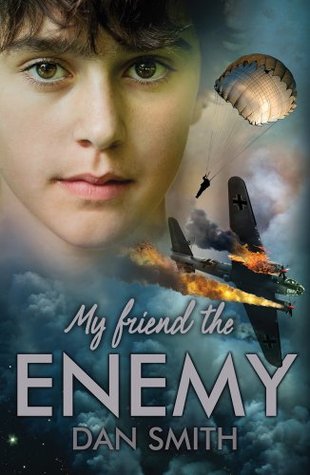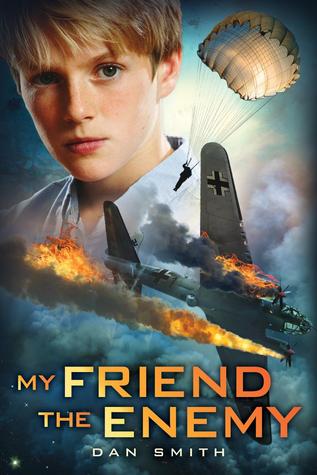 Summer, 1941. For Peter in rural Britain, the war is a long way away, being fought by a faceless enemy. Until the night a German plane is shot down over woods that his missing dad looked after before he went off to fight.
Summer, 1941. For Peter in rural Britain, the war is a long way away, being fought by a faceless enemy. Until the night a German plane is shot down over woods that his missing dad looked after before he went off to fight.Peter rushes to the crash site to see if there’s something he can keep, but what he finds instead is an injured young German airman. The enemy. Here.
And helping him seems like the right thing to do...
(368 pages)
I originally learned about this book at Becky's Book Reviews, and thought it sounded intriguing. It also sounded right up my alley. A World War II novel about English children harboring a German in the woods? Now that's a story I want to read!
This is really more of a message/story book than it is a character book - or at least, that's what it felt like to me. I felt like both main characters were very unrealistic, and their friendship became too deep and too lasting too fast. It was like insta-friendship instead of insta-love! The characterization of the German, Erik, was very well done considering he didn't actually speak English. I really liked him, and was probably more emotionally invested in him than I was in either Peter or Kim. He wasn't a picture on a propaganda poster, or a German solider-clone. He was a real person, with parents and a little brother back home, forced into a war he didn't want to fight and stuck in a miserable situation with little hope of evading discovery.
 As I was getting the cover image off of Goodreads, I discovered that there were two different versions of the cover. They are practically identical except for one thing: the model. In the version I read (which I put to the right so you can see what I'm talking about), Peter is much younger and fresh-cheeked. In the other cover, which I like better and put next to the synopsis, Peter looks older and more serious. These two different covers are a great illustration of the big quandary with this book: who is the target audience? After a lot of hard thought, I'm still not sure.
As I was getting the cover image off of Goodreads, I discovered that there were two different versions of the cover. They are practically identical except for one thing: the model. In the version I read (which I put to the right so you can see what I'm talking about), Peter is much younger and fresh-cheeked. In the other cover, which I like better and put next to the synopsis, Peter looks older and more serious. These two different covers are a great illustration of the big quandary with this book: who is the target audience? After a lot of hard thought, I'm still not sure.You see, the young age of the main characters implies a younger audience, but the honest depiction of scenes such as the crash and the carnage inside the plane make it a bit too much for younger readers. The story line with Erik (the nineteen-year-old injured German they hide in the woods) is a great tale of impossible, forbidden friendship against the odds. I also love the way Smith explores the idea that there is a difference between what war propaganda says about the enemy, and what the enemy is really like. The most obvious example of this is the scene where Peter is comparing the Germans on the war posters to Erik, and he decides that Erik doesn't look anything like a German because he isn't blond and menacing. More subtle messages about the humanity of the enemy are scattered throughout the book, making for a very touching and thought-provoking story.
But then there's the side story where Peter's father is off at war, and his dad's friend Mr. Bennett hangs out around the house giving Peter's mom presents. Peter wrestles with Mr. Bennett's intentions (which are never really clearly explained) and his mother's reception of this attention throughout the book, and is taunted by the village bullies about this. It's probably subtle enough kids wouldn't understand it unless someone went out of the way to explain it to them (which I definitely don't advise), but that combined with a few gory descriptions keep me from wholeheartedly recommending it to everyone.
What do you think? Have you read My Friend the Enemy, and if so who would you recommend it to?
Note: after writing this review it occurred to me that the brown-haired, older model might not be Peter - maybe he's Erik, instead. Ah, well, my opinion of the book still stands.
Thanks so much, Tiffany! I'd love to participate. I'll start working on my award post right away. :)
ReplyDelete